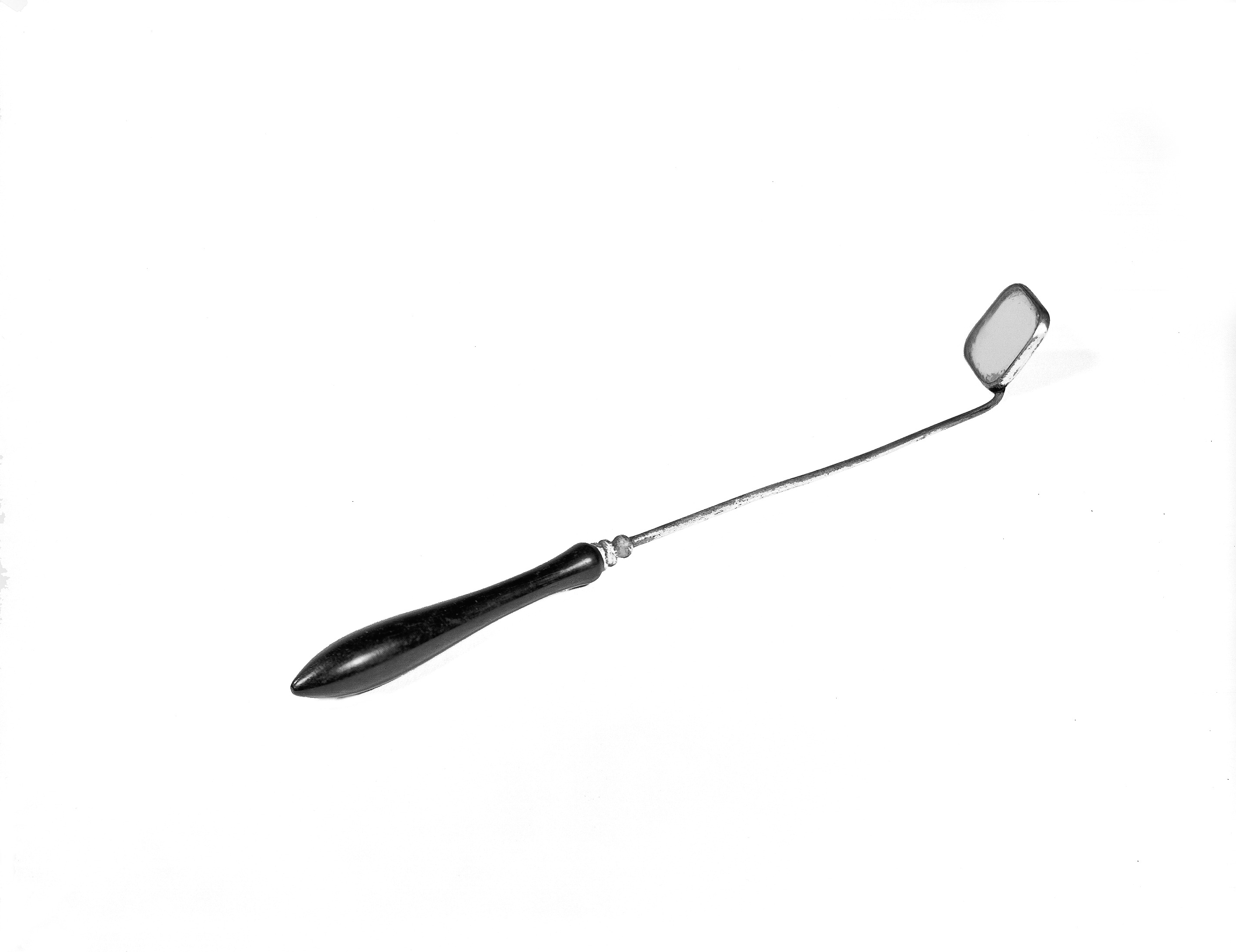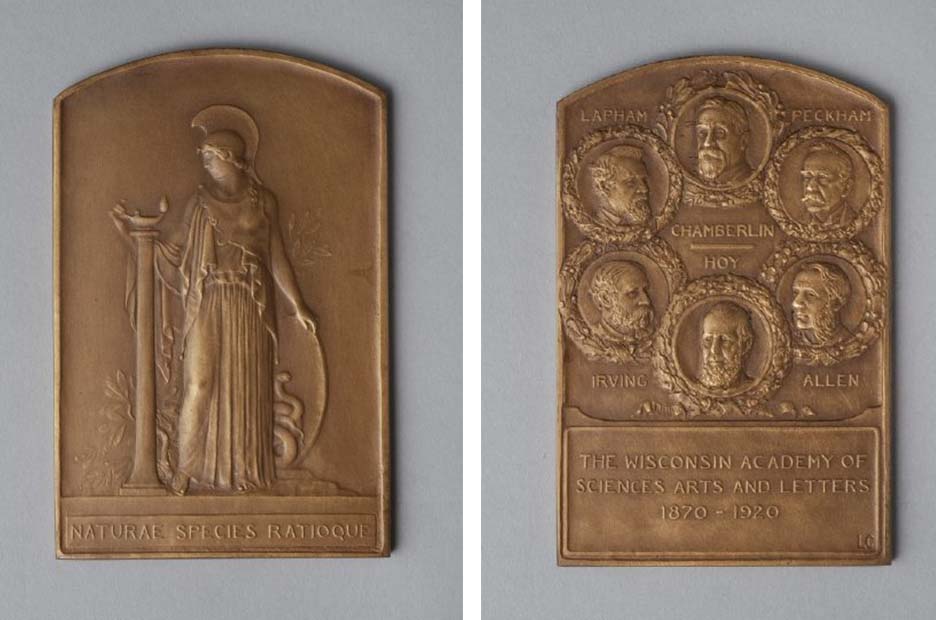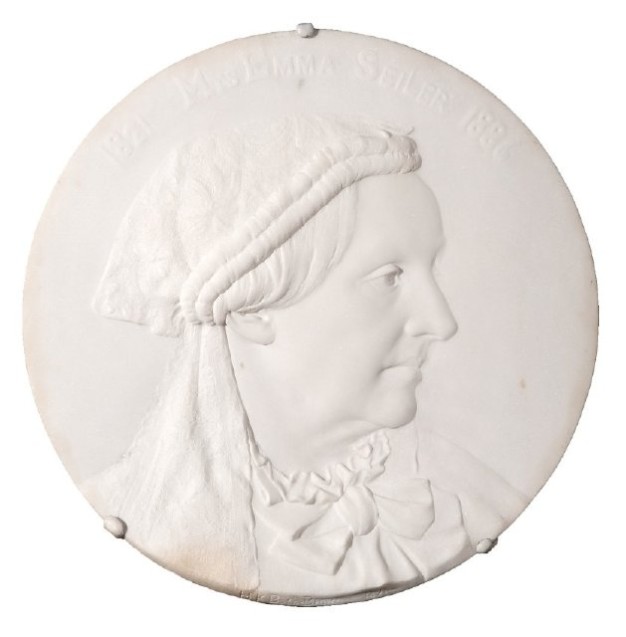Bas-Relief with Portrait of Emma Diruff Seiler: Recontextualizing the Portrait of a Woman Scientist
Header Image: “Bas-Relief with Portrait of Emma Diruff Seiler, 1891. APS.”]
There is little doubt that Emma Diruff Seiler, one of the first female Members of the American Philosophical Society, was a scientist. Her contemporaries labeled her as such, not to mention her effective work in observation, dissection, and with systematic inquiry. Seiler was a voice and piano instructor who studied vocal physiology to learn how to sing properly and avoid teaching harmful practices to her own students. She completed her studies using the laryngoscope, observing her own larynx, as well as that of her son, Dr. Carl Seiler. Her observations and discoveries exist in her two works, The Voice in Singing and The Voice in Speaking. The first work, The Voice in Singing, earned her a membership at the APS in 1870.

The APS has both treatises in its collection, as well as Seiler’s laryngoscope. Also included is a bas-relief portrait of the scientist, pictured above, crafted by Henry Kirke Bushe-Brown and donated by APS friends and members in 1891. The relief is made entirely of marble with a diameter of 17 inches. Depicted is Seiler in profile, wearing a lace cap and a high-collared blouse. The bas-relief is unique within the collection because it illustrates a distinguishable woman and, furthermore, a distinguishable woman scientist. Other reliefs in the collection, frequently much smaller medallions, do convey the female form. However, she is typically the “idealized” female, either mythological or allegorical.

An example of this is a medal from the Wisconsin Academy of Sciences, Arts, and Letters. The obverse side of the medal is a profile of Minerva, whereas the reverse is a collection of distinguishable male scholars. This medal reveals a tradition in which the idealized female body becomes a symbol of intellectual achievement, all while individual women are excluded from professionalized academia. Minerva embodies the work of the six men on the reverse side of the medal insofar as she is a symbol of knowledge and wisdom. She is then merely a vessel for male intellectualism.
The profile of Seiler, in contrast, preserves a real woman scientist. By displaying the distinguishable individual, it evokes the same sentiment as Renaissance portrait medals—ones that embody more humanistic ideals with their focus on the strength of the individual. It is the nature of bas-relief itself to recreate the human: the varying textures and three-dimensionality of the piece craft a multisensory experience between the subject and the viewer. Bushe-Brown effectively recreates the patterns and textures of Seiler’s lace cap, the frill of her collar, as well as the lines of her face. These moments of depth and increase in three-dimensionality contribute to the multisensory aspects of the profile, as Bushe-Brown sculpted to evoke realism, replicating the individual’s presence to effectively commemorate them and their work. This bas-relief is an exceptional piece as it privileges the female scientist in a way that was typically preserved for male scholars, as seen on the Wisconsin Academy medal. The sculpture commemorates a female scientist, and with its original housing in Philosophical Hall, memorializes her work.
Further Reading:
“Stated Meeting, November 20, 1891.” Proceedings of the American Philosophical Society 29,
no. 136 (1891): 149-62. Accessed August 9, 2021. http://www.jstor.org/stable/982933.

